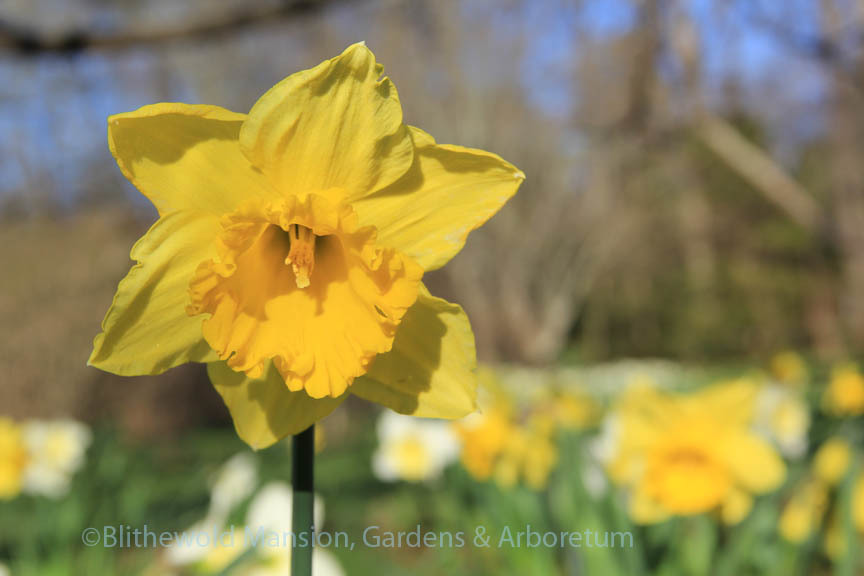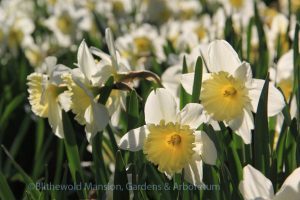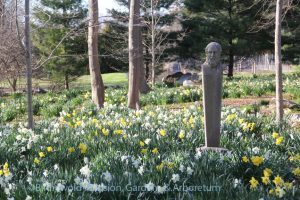Delightful Daffodils
This post is written by Gail Read, the Gardens Manager here at Blithewold. She has been here at Blithewold for over 25 years and is a fountain of knowledge about the plants and the property.
Daffodils lift our spirits when they bloom each year. They signal the end of our weary winter and the beginning of a fresh new spring. They are among the first spring ephemerals to bloom: reliably blooming each year bringing real cheer. When the daffodils bloom at Blithewold the property transforms into the magical land one imagines in an enchanted forest. Here are 10 fun facts about our daffodils.
1. Daffodils are classified officially into 13 Divisions (classes) according to their characteristics. You can find more about the different divisions here. Blithewold has daffodils from each of the 13 divisions.
2. There are between 40-200 daffodil species and subspecies and over 25,000 registered cultivars (named varieties). Blithewold has dozens of different varieties and over 50,000 daffodils all together.
3. Daffodils are perennial, blooming every year and known for their longevity. Blithewold’s owners began planting daffodils at the turn of the 20th century. Although it’s hard to know exactly how old they are, some clumps could be 100 years old. We still plant new daffodils each year.
4. Daffodil is their common name, narcissus is their Latin name. They are one in the same, all daffodils are narcissus. Jonquils are a type of daffodil and are classified in Division 7. They are characterized by having several yellow flowers on a stem, a strong scent and rounded foliage.
5. Blithewold’s earliest daffodils to bloom are ‘Little Gem’, ‘Ice Follies’ and ‘King Alfred’ and the last to bloom are ‘Thalia’, ‘Mrs. Backhouse’ and Poeticus ‘Actaea’. The blooms of the first to last daffodils usually last a month long depending on the weather. Cooler temperatures and especially cool nights keep the flowers blooming longer.
- Narcissus ‘Ice Follies’
- The Bosquet in almost full bloom.
6. All parts of the daffodils are poisonous. Deer and other critters don’t eat them.
7. We purchase daffodil bulbs in the fall from local nurseries or order from catalogs including Brent and Becky’s Bulbs, John Scheepers Bulbs, Van Engelen Flower Bulbs, and Old House Gardens-Heirloom Bulbs.
8. Enriching the soil with compost or an organic fertilizer is recommended when planting in the fall and again when the green leaves appear in the spring, top dressing the soil each time. At Blithewold we do not fertilize the bulbs (there are just too many!) but we do let the foliage die back naturally to restore the bulbs energy for the next year. Some foliage hangs on for six to eight weeks.
9. Daffodils make great cut flowers. Their stems release a substance that can harm other cut flowers arranged with them. Keep cut daffodils separate and their stems soaking for a couple of hours first, before adding to other flowers.
10. A gift of daffodils is said to ensure happiness and good fortune especially when given in bunches. The more the merrier!



